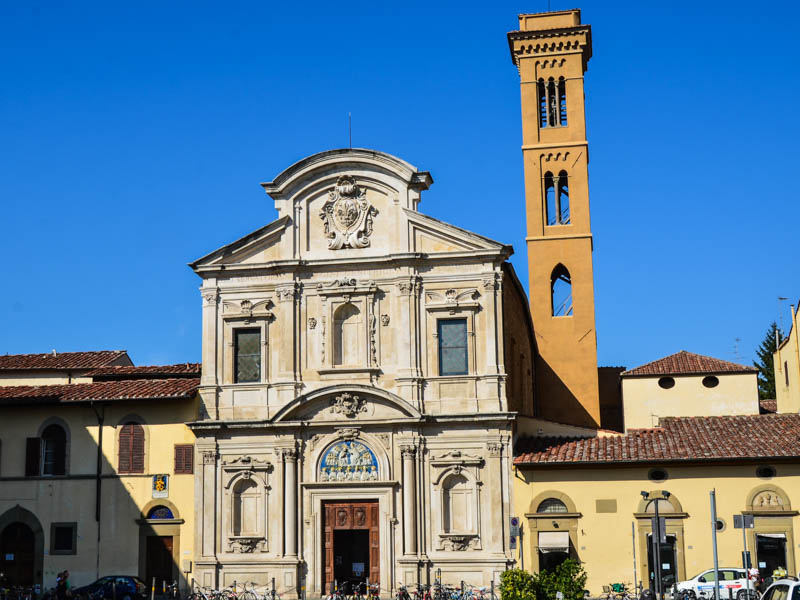
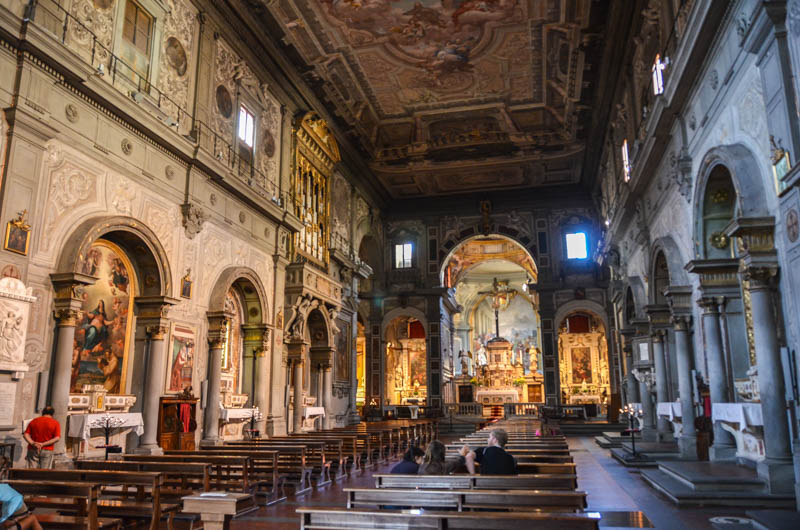
Founded in 1256 by the Umiliati, a wool-weaving sect of the Benedictines whose trade helped establish this area as a textile district, the present Ognissanti was rebuilt by its new Franciscan owners in the 17th century.
It has the earliest baroque facade in Florence, designed by Matteo Nigetti in 1627 and rebuilt in travertine in 1872.
Ognissanti was the parish church of the Vespucci family, agents of the Medici bank in Seville. A young Domenico Ghirlandaio portrayed several of the family members in his Madonna della Misericordia (1470) on the second altar to the right.
The lady under the Madonna's left hand may be Simonetta Vespucci, renowned beauty of her age, mistress of Giuliano de' Medici (Lorenzo the Magnificent's brother), and said to be the model for Venus in Botticelli's Birth of Venus now in the Uffizi.
The young man with black hair to the Madonna's right is said to be her cousin (by marriage), Amerigo Vespucci (1454–1512), whose letters about exploring the New World in 1499 and again from 1501 to 1502 would become so popular that the German cartographer Waldseemüller used the LAtin form of Amerigo's name—America—on an influential set of maps to describe the newly discovered continent. (Sorry, Columbus.)
The family tombstone (America's namesake rests in peace underneath) is to the left of this altar.
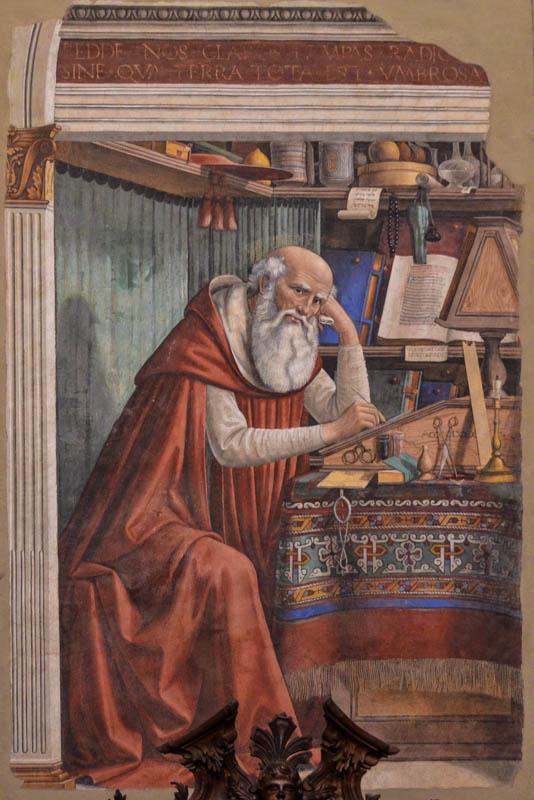
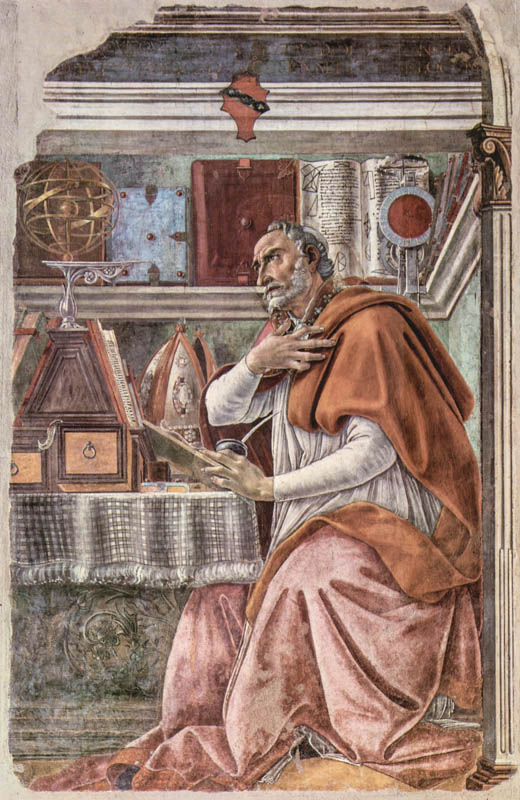
Medieval churches used to have a wall seperating the choir (where the clergy worshipped) from the nave (where the worshippers sat). This screen or wall was often either delicately carved or hung with works of art to amuse the worshippers—who couldn't actually see what was going on at the altar, just hear disembodied voices chanting in Latin.
The Ognissanti's wall—called a rood screen—was dismantled in the the 1640s by Vassari as part of an overhaul of the church interior, but a few of the artistic treasures that once decorated it remain.
Between the third and fourth altars is Botticelli's fresco of a pensive St. Augustine in His Study (1480), a rather more intense work than its matching St. Jerome in His Study by Domenico Ghirlandaio now displayed across the nave. But both of these were later additions to the rood screen.
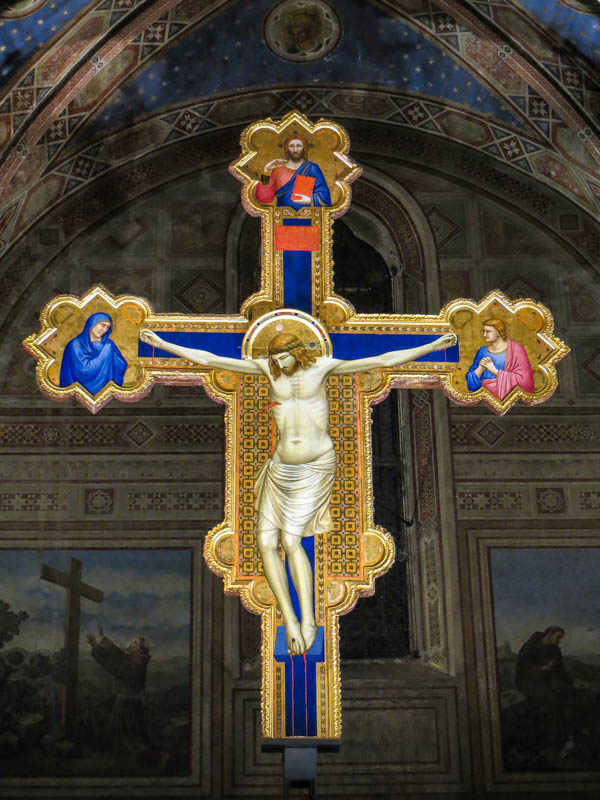
The screen also once boasted an amazing five works by Giotto, the Gothic painter who presaged the Renaissance. One of these, the Ognissanti Maestà, is now a prize of the Uffizi Galleries across town. Another, Dormition of the Virgin, is now in Berlin's Gemäldegalerie. Two more are lost.
And, for nearly a century, the fifth and greatest of the Giottos was squirreled away in a back room, a 4.67m (15-foot) painted Crucifix caked in candle soot and mistakenly written off as a work by one of his unknown pupils or perhaps a relative.
Vasari had stuck it into one of the transepts, which was later converted into a vesrment room. The Crucifixion ended up wedged between two wardrobes where it sustained prolonged damage. In 1926, when the transept was converted into a Cappella delgi Caduti World War I memorial, the worn painting was moved yet again into the Sacristy.
There it hung, forgotten, for nearly 80 years.
Then a British student at the Opificio della Pietre Dure made the cleaning of this "lesser" Gothic-era Crucifix her dissertation project, and slowly discovered—over a painstaking, eight-year restoration—that it had been painted by Giotto himself, either between 1310–15 or after 1320.
Returned to its former place in Ognissanti's left transept in 2011, this restored masterpiece showcases some of what made Giotto so revolutionary compared to the stylized Byzantine school still prevalent at the turn of the 14th cenury: His bold use of vibrant colors; the three-dimensionality of the scenery; the naturalism of the figures; the human emotion and realism on the people—look at the anguish in the wrinkles on Mary's face, the deathly pallor of Jesus's skin.
Also in the left transept, in the second chapel, is the Ognissanti's most treasured holy relic, the habit St. Francis was wearing when he received the stigmata.
Botticelli—whose real name was Alessandro "Sandro" di Mariano di Vanni Filipepi (his nickname, Botticelli, means" Little Barrels")—is buried under a round marker in the second chapel in the right transept.
It is said that the artist remained so devoted to his early muse, Simenetta Vespucci, that in his will he requested he be buried at her feet. (Same church; close enough.)
You can enter the convent to the left of the church facade at Borgo Ognissanti 42.
In the refectory here is Domenico Ghirlandaio's celebrated Last Supper, painted in 1480 with a background heavy on Christian symbolism.
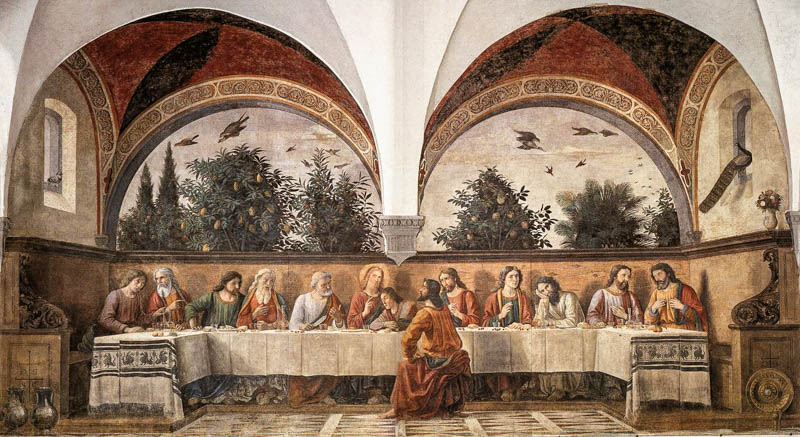
Piazza Ognissanti
tel. 055-239-8700
www.chiesaognissanti.it
Mon–Thurs, Sat: 9am-12:30pm
Sun: 4pm-5:30pm
Free admission
Bus: B, D; 12
Hop-on/hop-off: Ognissanti (A)
Planning your day: It will only take about 20–30 minutes to see the Church of Ognissanti.
Share this page
Search ReidsItaly.com
Piazza Ognissanti
tel. 055-239-8700
www.chiesaognissanti.it
Church: daily 8am–noon and 4–6:30pm
Convent: Mon, Tues, and Sat 9am–noon
Free admission
Bus: C, D; 12
Hop-on/hop-off: Ognissanti (A)